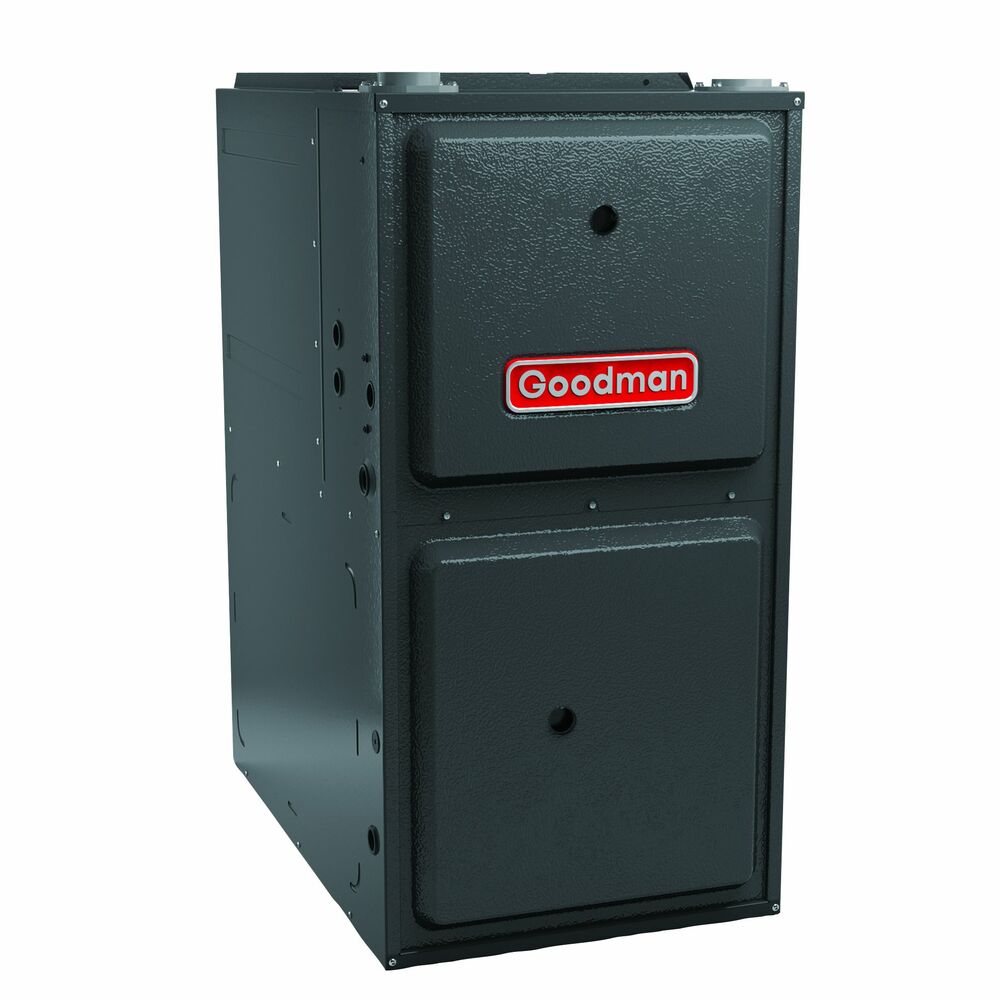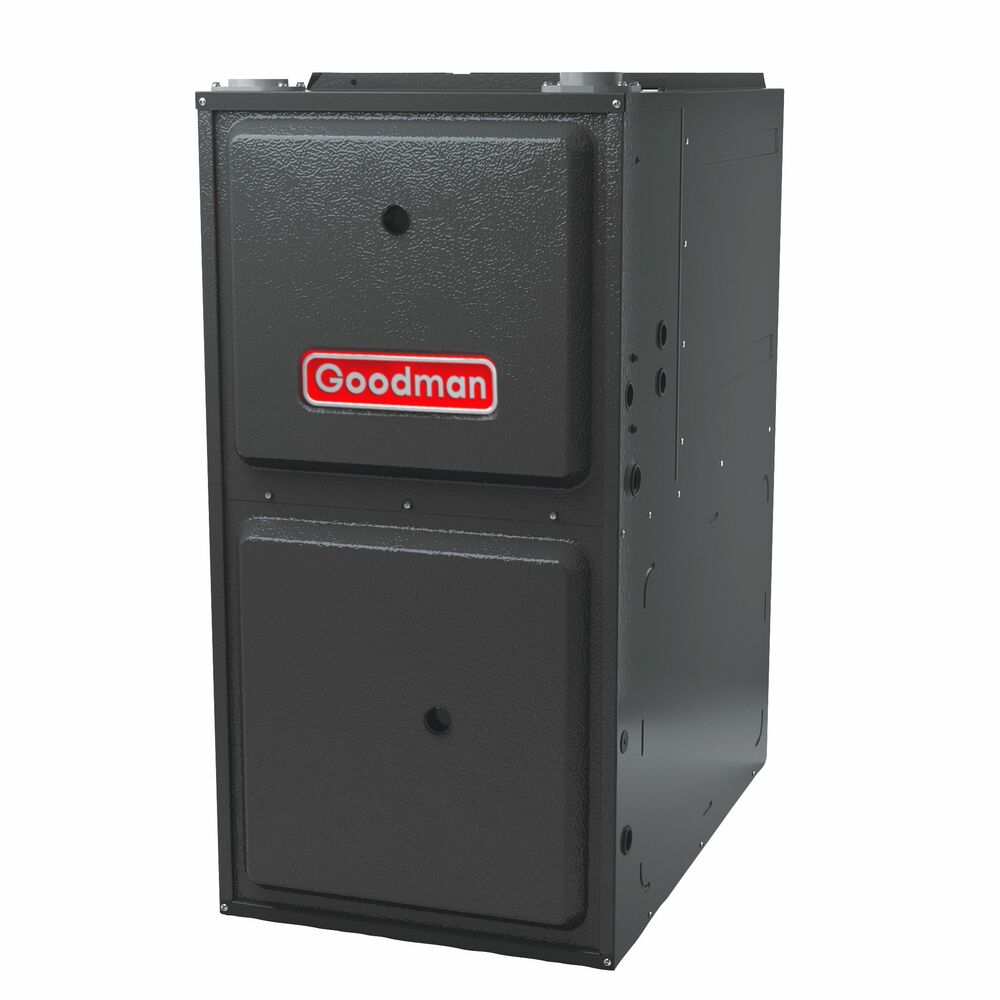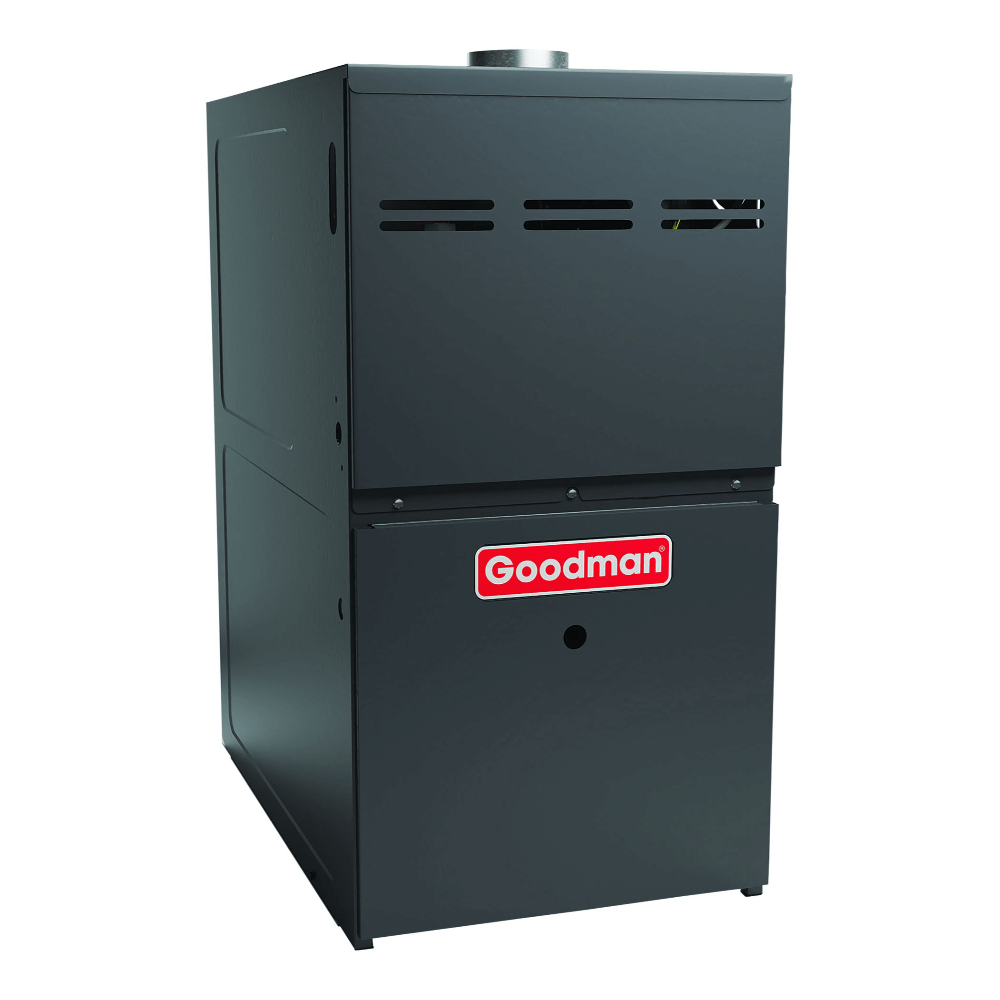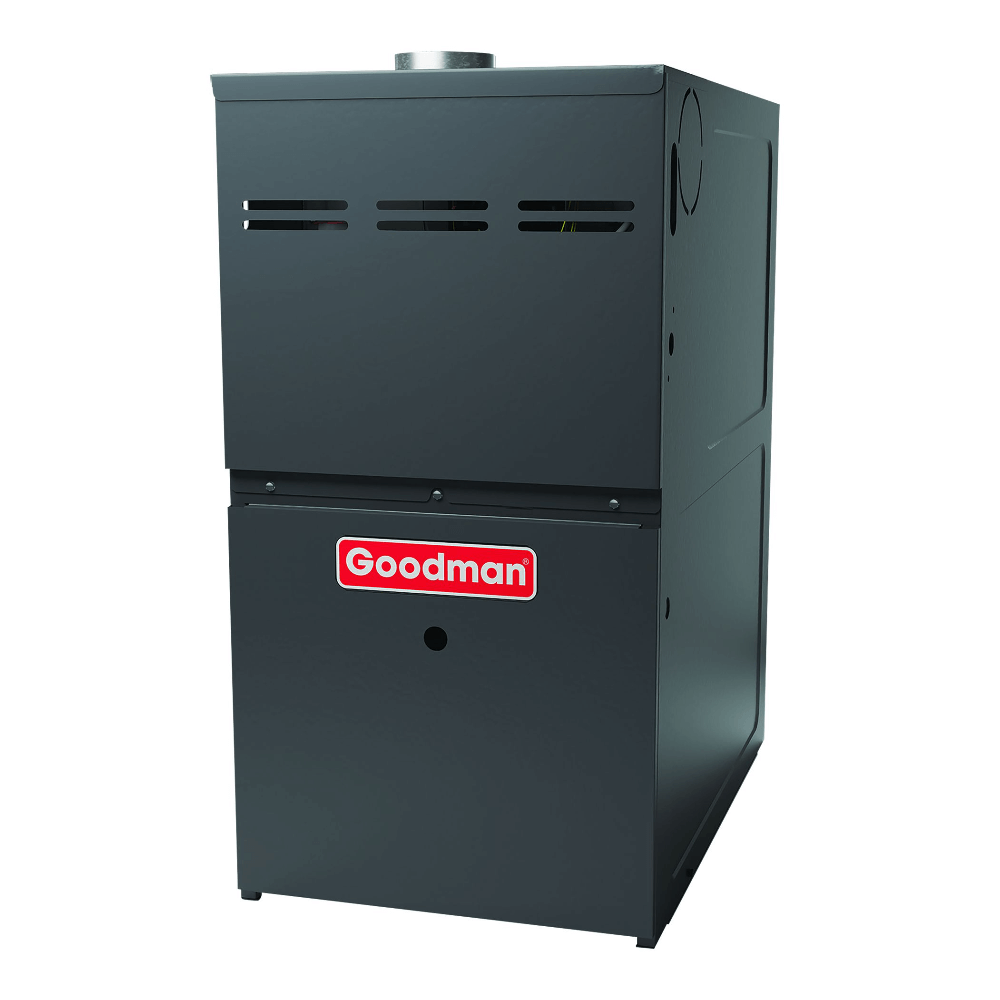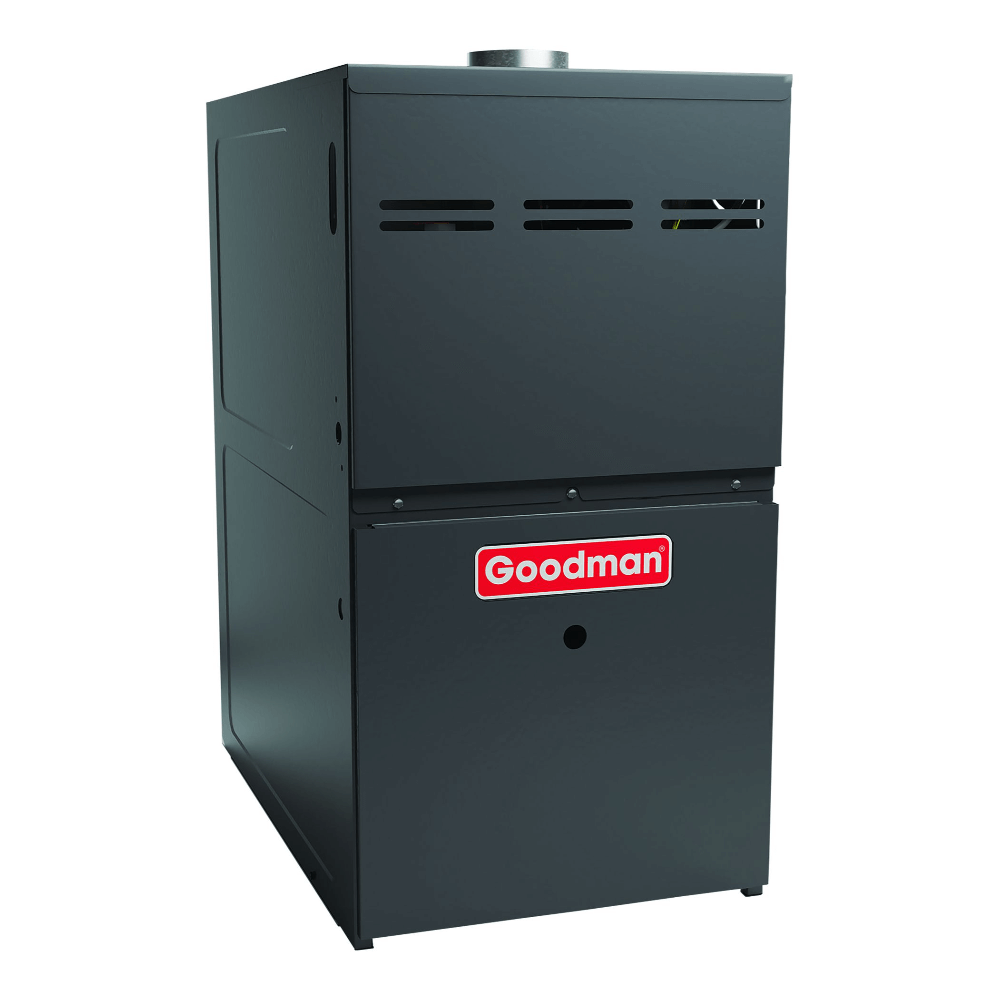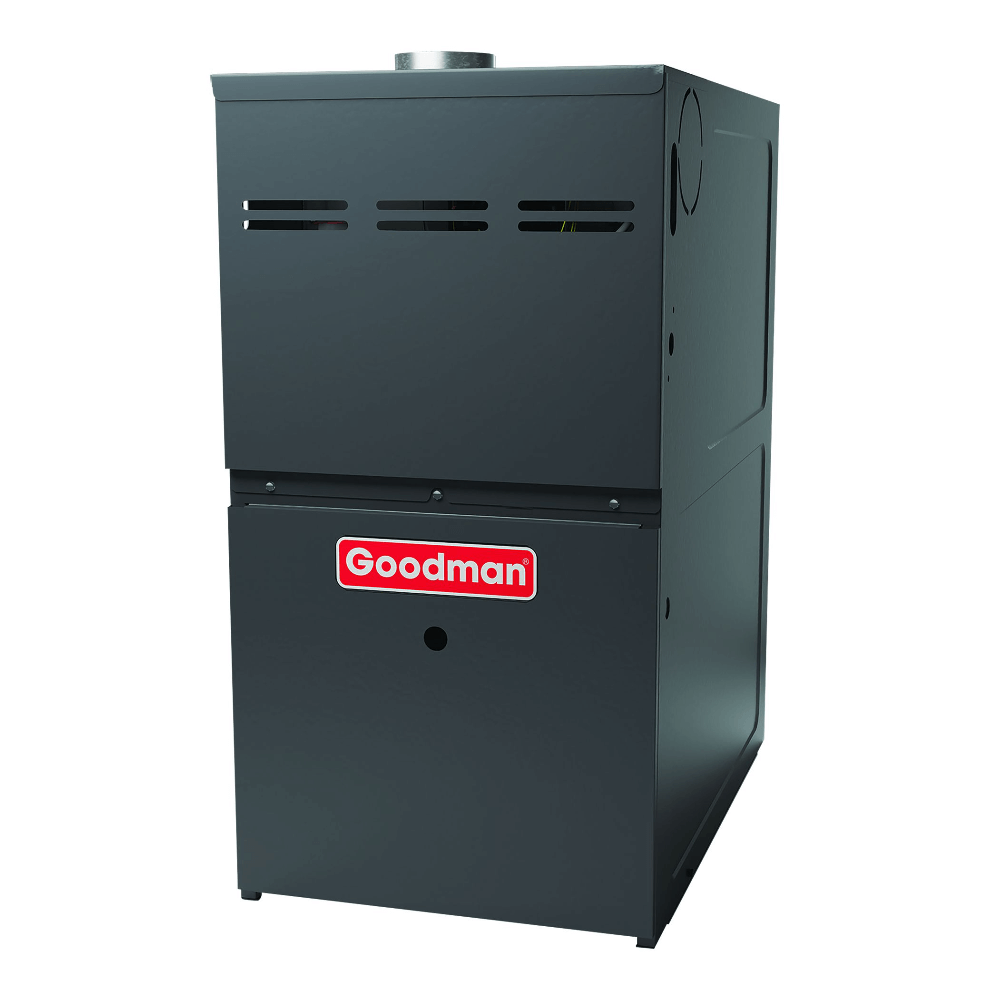What does furnace air flow have to do with which way the furnace filter goes? Airflow has everything to do with how the filter is orientated and its location. You can easily find your air filter and determine how to position it when you understand your system’s airflow.
Air flows through an HVAC system in a specific direction, and the components process the air in a particular order. Airflow direction differs from furnace to furnace, but processing steps are ordered the same. Furthermore, the home’s air flows through a filter before the furnace heats it. To find and correctly orient your air filter, you must know whether your furnace’s air flows down, up, or horizontally.

Find the Ideal Furnace for Your Home: View Our Products
How Does Furnace Air Flow Work
A furnace doesn’t generate air; the home’s air cycles through the furnace. The house’s cold air flows to the furnace, the temperature increases, and the air blows back into the home.
The process begins when the thermostat senses the room’s temperature drops below the setting and signals the furnace to start. The furnace fan or blower pushes air through the supply ducts, creating a negative pressure that pulls cold air from the rooms and into the return vents and ducts. The cold air flows through the return ducts to the furnace. The air passes through a filter at some point before the furnace heats it. The filter traps contaminants such as dust, hair, and pollen. Airflow issues sometimes occur if the filter is dirty or clogged. The filtered air enters the furnace, passes over the heat exchanger, and the air’s temperature rises. The blower sends the warm air into the supply ducts and through the rooms’ vents.
-
Downflow Furnaces
-
Upflow Furnaces
-
Horizonal Flow Furnaces
Downflow Furnaces
Air flows downward from downflow furnaces. A downflow furnace is installed on the top floor or highest level, such as an attic, making it a good option for homes without basements. Downflow furnaces are less efficient heaters than upflow furnaces because the airflow is opposite to the direction heat naturally rises. Therefore, downflow furnaces are more prevalent in warm regions of the country where the heating season is shorter than the cooling season.
How does a downflow furnace work?
Cool air from the return ducts flows into the blower compartment near the top of the furnace. The air flows down over the heat exchanger and the temperature increases. The blower pushes the warm air out the bottom of the furnace and through the home’s supply ducts and vents.
Benefits of a Downflow Furnace
- - Suitable for homes without basements.
- - Suitable for warm regions with short heating seasons.
- - Provides efficient cooling in the summer because cool air naturally sinks from vents and hot air naturally rises to the return ducts.
- - Lower energy costs when operating in cooling mode.
Upflow Furnaces
Air flows upward from upflow furnaces. An upflow furnace is installed on the bottom floor or lowest level, such as a basement. Upflow furnaces are efficient heaters because heat naturally rises but are less efficient in cooling mode. Consequently, they are excellent for homes in cold climates with longer heating seasons and shorter cooling seasons.
How does an upflow furnace work?
Cool air from the return ducts flows into the blower compartment at the bottom of the furnace. The air flows up over the heat exchanger, and the temperature increases. The blower pushes the warm air out the top of the furnace and through the home’s supply ducts and vents.
Benefits of an Upflow Furnace
- - Suitable for homes with basements.
- - Good for homes in cold climates with long heating seasons.
- - Provides efficient heating because heat naturally rises through the rooms from the floors.
- - Lower energy costs in winter.
Horizontal Flow Furnaces
Air flows across in horizontal flow furnaces. A horizontal flow furnace resembles a furnace lying on its side, and the components inside the furnace are situated in a row. Horizontal furnaces are installed in attics and crawl spaces with low ceilings that couldn’t accommodate upright furnaces.
Horizontal furnaces come in many styles: horizontal left, horizontal right, upflow horizontal, downflow horizontal, and multipoise. Heated air flows out the left side of a horizontal left furnace and the right side of a horizontal right furnace. Upflow horizontal and downflow horizontal furnaces can be configured in two ways: horizontally or upflow/downflow. Multipoise or multipositional furnaces can be configured in four ways: upflow, downflow, horizontal left, or horizontal right.
How does a horizontal furnace work?
Cool air from the return ducts flows into the blower compartment at one side of the furnace. The air flows sideways over the heat exchanger and the temperature increases. The blower pushes the warm air out the other side of the furnace and through the home’s supply ducts and vents.
Benefits of a Horizontal Furnace
- - Space-saving design; furnaces can be installed in rooms with low ceilings.
- - Flexible configurations to match many home styles
Where is the furnace filter located?
The filter is typically where the central return air duct meets the furnace to prevent contaminants from entering the furnace. The filter could also be inside the furnace’s blower compartment or behind a return vent in a wall or ceiling. Some systems have more than one filter.
Knowing the filter’s location is essential. Filters should be changed regularly to maintain good air quality and prevent contaminants from entering the HVAC system. How often you should change the air filter varies. Generally, filters are changed every month to every three months.
-
For horizontal air flow units…
The filter is on the return duct side of the furnace, inside the furnace’s blower compartment, or behind the return vent in a wall or ceiling.
-
For vertical upflow units…
The filter is on the return duct side near the bottom of the furnace, inside the furnace’s blower compartment, or behind the return vent in a wall or ceiling.
-
For vertical downflow units…
The filter is on the return duct side near the top of the furnace, inside the furnace’s blower compartment, or behind the return vent in a wall or ceiling. These units usually require two filters.
-
For air handlers…
Some homes in warm climates have air handlers with electric coils instead of furnaces. The filter is either in a built-in filter rack behind the air handler’s access panel or behind the return vent in a wall or ceiling.
Which way does the furnace filter go?
Filters have arrows that should point in the direction of the airflow when inserted into the filter housing. In other words, the filter’s arrow should point to the blower in the furnace. Furnaces usually have arrows indicating the airflow’s direction stamped on a metal panel near the filter housing.
If the filter has metal mesh, the mesh should face the blower. The arrow should point to the ceiling or wall for filters behind return vents in ceilings and walls, and the metal mesh should face the ceiling or wall.
Pro Tip
Draw an arrow with a permanent marker near the filter slot that points in the airflow’s direction. When you change your filter, point the arrows on the filter in the same direction as the arrow you drew.

Find the Ideal Furnace for Your Home: View Our Products
The Importance of Knowing Your Furnace Air Flow
Understanding your furnace’s airflow, the locations of your return vents and ducts, and where air enters the furnace’s blower compartment from the central return duct can help you locate your filter(s) and correctly install them.
Air flows through furnaces in specific directions: down, up, horizontally to the right, or horizontally to the left. Understanding your furnace’s airflow is useful when performing HVAC system maintenance, such as replacing the air filter.
The air filter is the crucial component that protects the HVAC system from airborne contaminants and improves the home’s air quality. The filter must be installed correctly and regularly replaced to fully function and maintain proper airflow.
Air filters clean the cold air from the return ducts and can be found in three locations: where the central return air duct meets the furnace, behind a return air vent in a wall or ceiling, or inside the furnace’s blower compartment.
Consult the furnace’s owner’s manual or find one online if you can’t locate your air filter or need additional information about replacing it. Remember to change your filter every month. If the filter doesn’t appear dirty after 30 days, you might only need to change it every 60 or 90 days. Call an HVAC service and schedule an inspection for airflow or other HVAC system problems.
Frequently Asked Questions
How to get more air flow from my furnace?
To increase furnace airflow:
- Replace the air filter(s).
- Unblock, open, and clean all the heating vents.
- Unblock and clean all the return air vents.
- Seal any air duct leaks with metal tape.
Can a furnace make you sick?
A poorly maintained furnace can cause sneezing, coughing, headaches, watery or itchy eyes, and sore throats. These symptoms are typically due to dust, pollen, and other allergens clogging the air filter.
Carbon monoxide leaks in furnace components are rare but significantly more dangerous. Symptoms of carbon monoxide poisoning are headaches, nausea, shortness of breath, and confusion.
What happens if you put the furnace filter backwards?
A backward filter causes reduced filtration and airflow and might disintegrate or damage the HVAC system. The filter’s material filters in only one direction and the multiple layers increase in density from top to bottom. The metal mesh holds the filter together, but only when it’s installed correctly.


